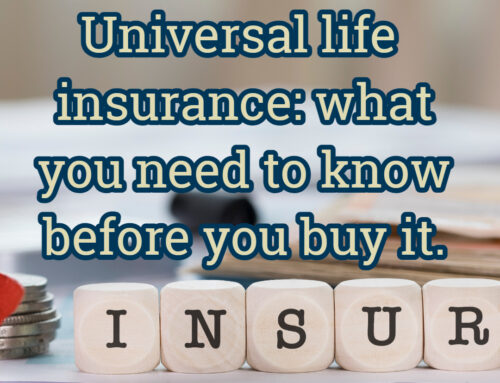by Daniel Stewart
Individuals typically rely on traditional methods like bank loans or mortgages when purchasing high-ticket items, such as real estate, businesses, or automobiles. However, the rich have used a lesser-known financial tool for years to grow their wealth and accumulate more assets. This financing method is a powerful strategy that some call “infinite banking.” The cornerstone of this tax-advantaged approach is specially- designed permanent life insurance. In most instances, whole life insurance is the type of insurance used.
What is whole life insurance?
As the name implies, whole life insurance is coverage intended to stay in force for your entire life. This contrasts with term policies, typically issued for a specific time, such as 10, 15, or 25 years.
One of whole life’s unique features is its cash value component, which grows over time as you pay premiums and interest accrues. The policy owner can borrow against or withdraw money from the cash value account, creating opportunities for financing various business ventures such as investment properties.
There are many nuances to using this approach. You should do your research and consult with an insurance expert before deciding to execute an infinite banking-type plan. Speaking to others who have financed purchases in this manner might also help you better understand the process and its pros and cons.
How infinite banking plays out in real life.
To help you discover more about the infinite banking process, I’ve put together a few case studies based on everyday scenarios involving the use of whole life in purchasing real estate.
Again, let me emphasize that everyone’s financial situation and risk tolerance differ, and nothing in these case studies implies guaranteed results. Still, these studies might help you better grasp the essentials of this powerful wealth-building strategy.
Case Study 1: The Wealth-Building Estate
Joe was a prudent investor who wanted greater diversity in his portfolio by adding real estate. Instead of taking out a conventional mortgage, Joe used the cash value accumulated in his whole life insurance policy. Because he had been consistently paying premiums for years, the cash value in his policy had increased significantly. By taking a policy loan against this cash value, Joe got enough money to make a down payment on a cash-flowing rental property.
Advantages over traditional finance methods:
- Joe did not endure invasive credit checks or a lengthy approval process as he would have using a bank.
- Joe’s policy continues to earn dividends and interest even as he pays back the loan as if he hadn’t borrowed a cent!
- Joe’s interest on the policy loan was much lower than traditional mortgage rates.
- Joe had the flexibility to set up the repayment schedule and payment amounts.
- Since Joe is paying himself back with interest, his account grows even more rapidly than anticipated.
Case Study 2: The Tax-Efficient Flip
An experienced real estate flipper, Joelle spotted an excellent property investment opportunity. She needed quick financing because she wanted to maximize returns on this investment. Instead of liquidating her assets or applying for a high-interest loan, Joelle used cash from her whole life insurance policy, taking out a policy loan to cover the purchase and renovation costs of the property.
By taking the infinite banking route, Joelle:
- Got immediate access to her funds without disrupting existing investments. She was able to jump on an opportunity and not get slowed down by the standard loan application process.
- She experienced tax benefits. In most cases, policy loans are tax-free and don’t trigger capital gains.
- Like Joe, she had more flexibility and could wait to repay the loan until she sold the property.
Case Study 3: Protecting his legacy.
Rick wanted to purchase a family vacation home where he and his wife and kids could create lifetime memories. However, Rick was worried that taking on another mortgage might burden his family if anything happened to him. Rick used his whole life insurance policy as a financial safety net. He borrowed from the policy’s cash value and got the money to buy a vacation property without passing on a mortgage obligation to his loved ones.
Advantages of this method:
- Having a specially engineered whole-life policy ensures a debt-free inheritance for your beneficiaries.
- Taking out a policy loan won’t give credit scores or require traditional loan qualifications.
- Again, there is a lot of flexibility in repayment. This creates breathing room if Mark experiences an unforeseen financial issue and must postpone or miss payments.
These case studies illustrate just a few of the hundreds of ways savvy Americans have used whole life insurance to gain more control over their money and increase liquidity. With some imagination and help from an insurance specialist who is well-versed in designing these policies, you can eliminate or significantly reduce your dependence on traditional bank loans.
Conclusion
Whole life insurance is a powerful and versatile financial tool with uses extending far beyond the death benefit. You can use the cash in your policy to efficiently finance large real estate purchases. This gives you numerous advantages, such as quick access to funds, tax efficiency, and repayment flexibility. As with any financial decision, individuals should carefully consider their unique circumstances and consult with financial advisors to determine if leveraging whole life insurance aligns with their long-term goals.






